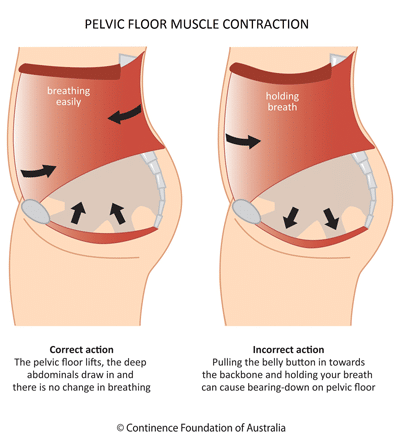By Sumaiya Farheen and Andrew Siyabalawatte, August 2023.
The major muscles of your core include your transverse abdominis, multifidus, internal and external obliques, erector spinae, diaphragm, pelvic floor muscles, and (of course) your abs, also known as the rectus abdominis.
In my opinion, the most interesting muscle of the core group is the transverse abdominis.
The Transverse Abdominis

The transverse abdominis connects the ribcage and the pelvis together. It protects the internal organs and supports the torso. Weakness in the transverse abdominis can lead to lower back fatigue after prolonged standing or walking.
Strengthening Exercise For The Transverse Abdominis
Check out our strengthening exercise demonstrated by our pilates and soft tissue specialist, Natalia. Do this exercise daily to improve your core strength and you will be walking up and down hills with no more lower back discomfort in double quick time!
The transverse abdominis, co-contracts with your pelvic floor muscles, improving support to the low back and pelvis, and optimizing pelvic floor muscle function.
The Pelvic Floor And The Core
The pelvic floor muscles form the base of the group of muscles commonly called the ‘core’. These muscles work with the deep abdominal (tummy) and back muscles and the diaphragm (breathing muscle) to support the spine and control the pressure inside the tummy.
During exercise, the internal pressure in the tummy changes. For example; when lifting a weight, the internal pressure increases, when the weight is put down, the internal pressure returns to normal.
When lifting weight, the muscles of the ‘core’ work together, the pelvic floor muscles lift, the abdominal and back muscles draw in to support the spine, and breathing is easy (the first image). In this scenario, the pelvic floor muscles respond appropriately to the increase in abdominal pressure.

However, when lifting weight, if any of the muscles of the ‘core’, including the pelvic floor, are weakened or damaged, the coordination between pelvic floor contraction and breathing may be altered and unsynchronized. In this situation, during exercises that increase the internal abdominal pressure, there is potential to overload the pelvic floor causing depression, where the pelvic floor muscles starts to succumb to the increased pressure (second image).
This where core strength in the Transverse Abdominis muscle is essential, as it helps with deep breathing in heavy lifting.
What Is The Meaning Of A Strong Core?
A strong core is not required to look amazing. As the saying goes, “looks can be deceiving”. Core strength is less about looks and power and more about the subtleties of being able to maintain the body in ideal postures AND faulty postures created by a sedentary lifestyle which challenges and forces the core muscles to weaken.
Thus, a strong core will unload pressure of the joints and promote ease of movement.
The Muscles of The Pelvic Floor in Men and Women
Deep within the pelvic realm, the enigmatic pelvic floor muscles operate uniquely in each gender.

In men and women, the pelvic floor play a crucial role in providing unwavering support to the bladder. It protects the uterus, and rectum (last part of the bowel), particularly during pregnancy and childbirth. These muscles take charge of control, governing urinary, bowel functions, and playing a key role in sexual health.
Despite their distinct roles, both genders will benefit from good core strength and stable pelvic floor muscles. Regular exercises and expert advice harmonize their strength, enhancing the symphony of life.
Back Brace For Bad Posture – Bracing or Debilitating?
Think of a posture brace as a tailored garment designed with the intention of compressing muscles to nudge your spine into healthier alignment.
Their purpose? Counteracting the strains of poor posture, that can lead to discomfort and long-term troubles. These braces, often equipped with straps, bands, or panels, encircle your shoulders, back, and sometimes your waist, providing you with a keener awareness of what good posture feels like.

Though, day after day, we spend hours hunched over our computers, we crane our necks downward as we mindlessly scroll through our phones. We twist our bodies into the position that most easily allows us to balance our laptops and type from the comfort of the couch. Imagine this happening, day after day, for months and even years.
Think, “How much good will these posture braces do for you in the long term?”. It may be that if you keep it on for too long, your body may begin to rely on the posture corrector brace so much that you revert back to the bad posture. Ultimately, strengthening your body to suit your environment may be a better and safer investment of your time and money.
Final Thoughts

To improve core strength and keep your spine healthy, embrace gentle stretches, foam rolling, and low-impact exercises to release tension, build strength and enhance flexibility. Hydration, balanced nutrition, and ample rest complete the recipe for a resilient core, primed for future challenges.
In closing, the journey to better posture, core strength and spinal alignment is one paved with awareness and action. However, remember that they are most effective when combined with consistent efforts such as core-strengthening exercises and mindful posture practices.
Here at Back To Health Wellness, we will help you on the way to fostering a healthier and more aligned future for yourself.

